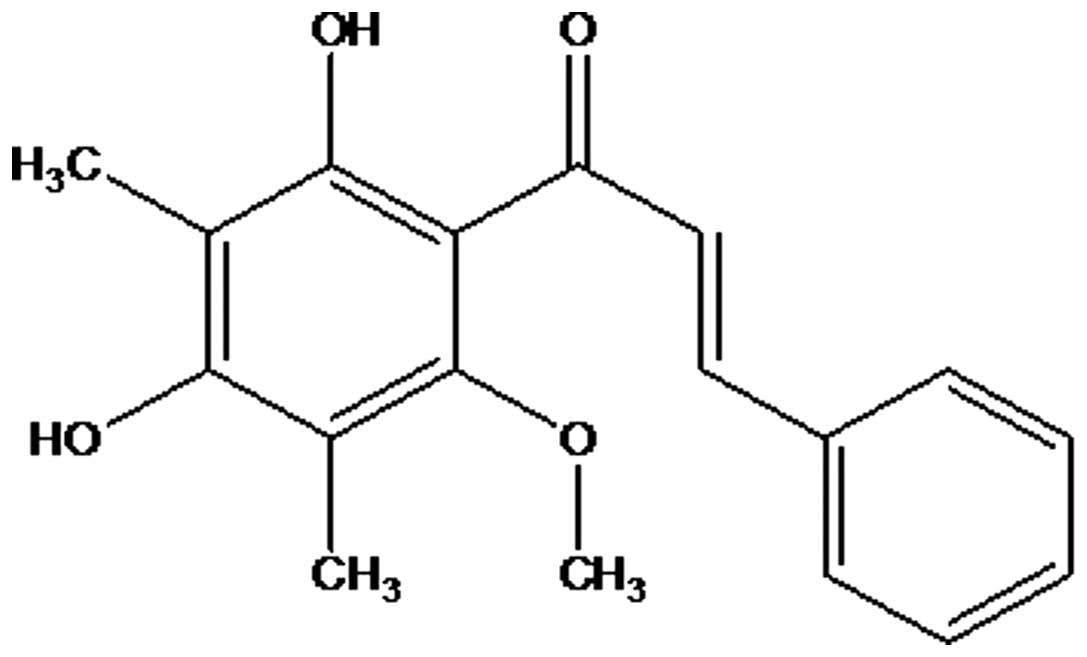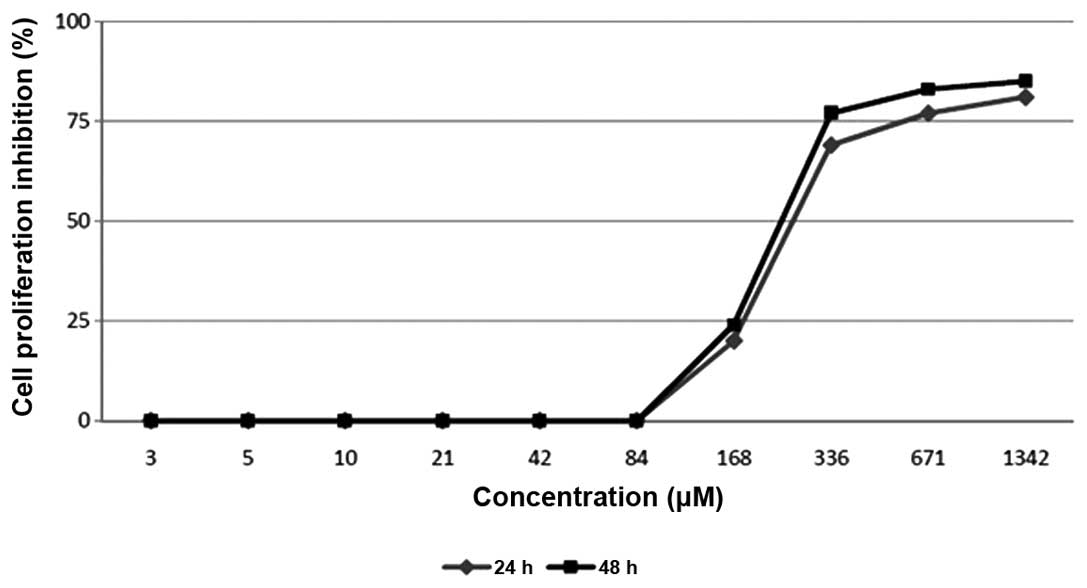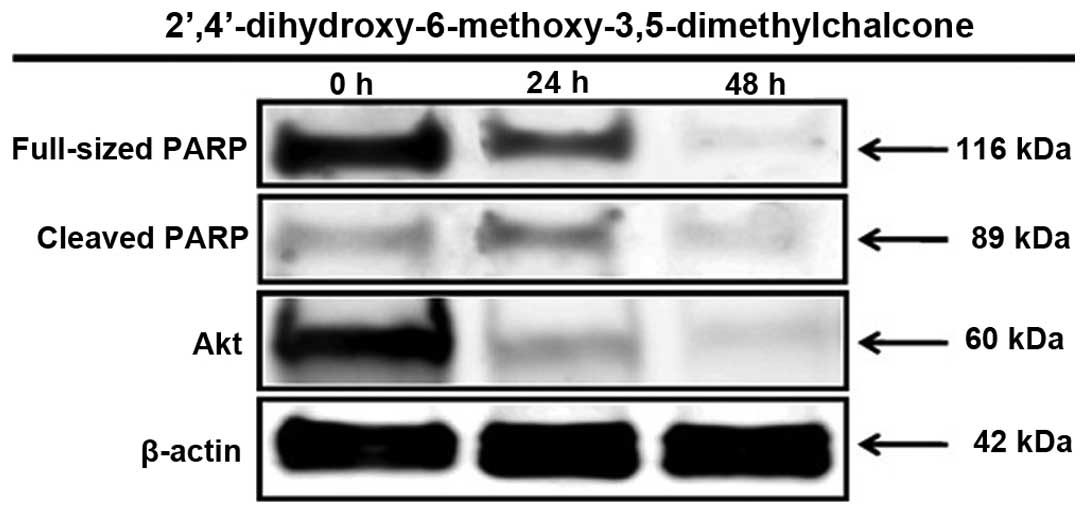Spandidos Publications style
Subarnas A, Diantini A, Abdulah R, Zuhrotun A, Hadisaputri YE, Puspitasari IM, Yamazaki C, Kuwano H and Koyama H: Apoptosis induced in MCF-7 human breast cancer cells by 2',4'-dihydroxy-6-methoxy-3,5-dimethylchalcone isolated from Eugenia aquea Burm f. leaves. Oncol Lett 9: 2303-2306, 2015.
APA
Subarnas, A., Diantini, A., Abdulah, R., Zuhrotun, A., Hadisaputri, Y.E., Puspitasari, I.M. ... Koyama, H. (2015). Apoptosis induced in MCF-7 human breast cancer cells by 2',4'-dihydroxy-6-methoxy-3,5-dimethylchalcone isolated from Eugenia aquea Burm f. leaves. Oncology Letters, 9, 2303-2306. https://doi.org/10.3892/ol.2015.2981
MLA
Subarnas, A., Diantini, A., Abdulah, R., Zuhrotun, A., Hadisaputri, Y. E., Puspitasari, I. M., Yamazaki, C., Kuwano, H., Koyama, H."Apoptosis induced in MCF-7 human breast cancer cells by 2',4'-dihydroxy-6-methoxy-3,5-dimethylchalcone isolated from Eugenia aquea Burm f. leaves". Oncology Letters 9.5 (2015): 2303-2306.
Chicago
Subarnas, A., Diantini, A., Abdulah, R., Zuhrotun, A., Hadisaputri, Y. E., Puspitasari, I. M., Yamazaki, C., Kuwano, H., Koyama, H."Apoptosis induced in MCF-7 human breast cancer cells by 2',4'-dihydroxy-6-methoxy-3,5-dimethylchalcone isolated from Eugenia aquea Burm f. leaves". Oncology Letters 9, no. 5 (2015): 2303-2306. https://doi.org/10.3892/ol.2015.2981


















